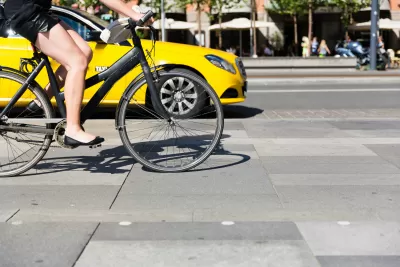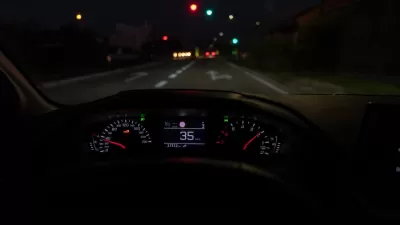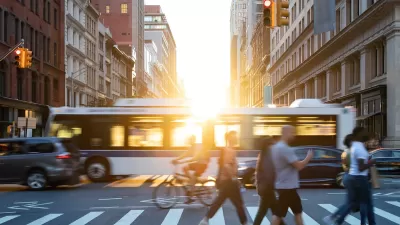A new set of guidelines will help the media improve the accuracy of traffic safety coverage.

The Active Travel Academy drafted a set of "Road Collision Reporting Guidelines" meant to reduce partiality and increase accuracy in reporting.
"There’s a problem with how we talk about our roads. From news reports on “accidents” to who gets blamed for road danger in comment pieces, our media sources sometimes flip the sources of death and injury on their head. Language and accuracy matter, and too often reporting contributes to making the roads less safe," write Laura Laker and Martin Porter.
Laker and Martin point to research indicating that different verbiage used to describe crashes "affects how people see the causes of and solutions to road danger."
"Representatives from national roads policing, the National Union of Journalists’ ethics council, road safety and legal experts, academics, and with advice from the independent journalism regulator Impress" helped to composed the guidelines.
The guidelines set forth the following instructions for publishers:
- Refrain from using the word "accident" when describing road collisions.
- Avoid negative generalizations when referring to road users or specific groups of road users.
- Uphold context and fact in reporting, including making mention of human actors involved in collisions.
- "Avoid portraying dangerous or criminal behaviour on the roads, such as speeding, as acceptable, or those caught breaking the law as victims."
FULL STORY: Why we need media reporting guidelines for road safety

Planetizen Federal Action Tracker
A weekly monitor of how Trump’s orders and actions are impacting planners and planning in America.

Congressman Proposes Bill to Rename DC Metro “Trump Train”
The Make Autorail Great Again Act would withhold federal funding to the system until the Washington Metropolitan Area Transit Authority (WMATA), rebrands as the Washington Metropolitan Authority for Greater Access (WMAGA).

DARTSpace Platform Streamlines Dallas TOD Application Process
The Dallas transit agency hopes a shorter permitting timeline will boost transit-oriented development around rail stations.

New Jersey Duplexes Elicit Mixed Reactions
Modern, two-unit residences are proliferating in northern New Jersey communities, signaling for some a boon to the housing supply and to others a loss of historic architecture.

Renters Now Outnumber Homeowners in Over 200 US Suburbs
High housing costs in city centers and the new-found flexibility offered by remote work are pushing more renters to suburban areas.

The Tiny, Adorable $7,000 Car Turning Japan Onto EVs
The single seat Mibot charges from a regular plug as quickly as an iPad, and is about half the price of an average EV.
Urban Design for Planners 1: Software Tools
This six-course series explores essential urban design concepts using open source software and equips planners with the tools they need to participate fully in the urban design process.
Planning for Universal Design
Learn the tools for implementing Universal Design in planning regulations.
Municipality of Princeton
Roanoke Valley-Alleghany Regional Commission
City of Mt Shasta
City of Camden Redevelopment Agency
City of Astoria
Transportation Research & Education Center (TREC) at Portland State University
US High Speed Rail Association
City of Camden Redevelopment Agency
Municipality of Princeton (NJ)





























